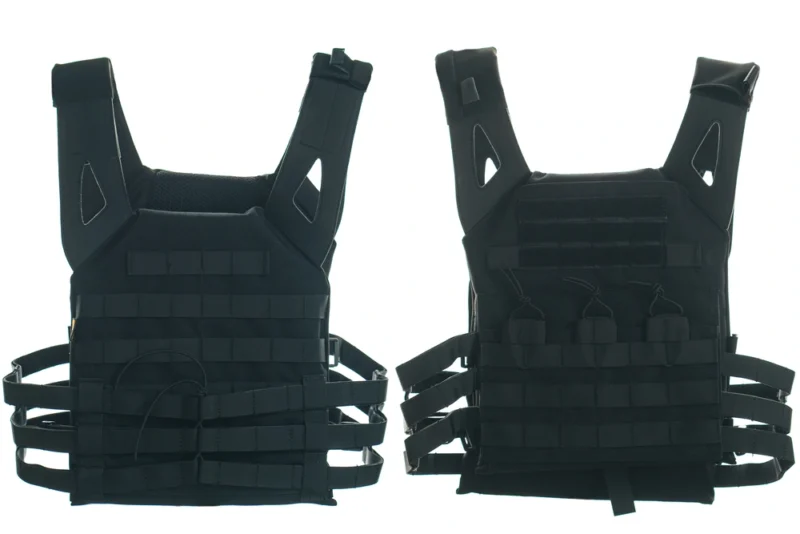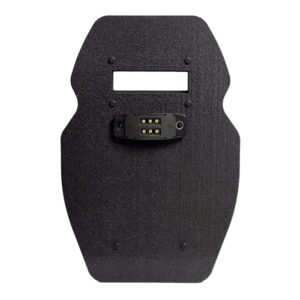Ballistic Shields vs. Bulletproof Vests: When to Use Each

To protect your safety, it is crucial to guard yourself against weapons. Firearms can pose a risk either directly or indirectly, and sometimes accidents can happen when others use firearms around you. Therefore, two major commonly applied types of protection gear guard people from the onslaught of bullets: ballistic shields and bulletproof vests.
Understanding when and why to use each of these protective tools is key for those who may find themselves in dangerous, high-risk situations. This blog will explore the differences between ballistic shields and bulletproof vests, explaining how each works and guiding when one should be chosen.
What Are Ballistic Shields?
A ballistic shield is a light, portable protective device normally carried by law enforcement officers, military personnel, or security teams during high-risk operations. It is supposed to stop or lessen the effects of bullets, shrapnel, and other projectiles during hostile encounters. Although ballistic shields vary in shape and size, they are generally big enough to cover an individual’s torso and head.
Ballistic shields are made of advanced materials such as Kevlar, polycarbonate, and steel and are built to withstand specific calibers of ammunition. Most are fitted with a handle or a strap for the easy transportation of the shield, and some even feature vision ports for better visibility in combat situations.
When To Use Ballistic Shields
Ballistic shields are extremely useful when individuals must protect themselves from incoming fire while advancing through a potentially hostile environment. Some of the common scenarios where ballistic shields are often used include the following:
Active Shooter Incidents
Ballistic shields ensure officers have greater protection when engaging a shooter, such as when a law enforcement team or SWAT arrives at an active scene. The shields help officers maneuver close to the potential threat while facing as little firing as possible toward themselves.
Tactical Operations
In close-quarters battles and raids in military and police tactical operations, ballistic shields are typically used. This shield affords operators a tactical advantage because it allows the person to shelter themselves when clearing a room or while performing operations within hostile areas.
Crowd Control
In civil unrest or protests, law enforcement may use ballistic shields to create a barrier between themselves and a potentially violent crowd. The shield helps protect thrown objects or gunfire if the situation escalates.
VIP Protection
In VIP or dignitary protection details, ballistic shields can be deployed to protect the individual of interest when there is a credible threat. The shield can be positioned before the VIP to safeguard them from harm.
What Are Bulletproof Vests?
A bulletproof vest, or ballistic vest, is body armor designed to protect an individual’s vital organs from gunfire. Law enforcement officers, military personnel, and private security agents wear it as part of their standard uniforms. The vest consists of layers of woven or laminated materials such as Kevlar, Dyneema, or other high-strength fibers, which absorb and disperse the bullet’s energy on impact.
Bulletproof vests are designed to be worn over the torso, covering key areas such as the chest, abdomen, and back. Depending on the rating, the most advanced vests offer protection against a wide range of bullets, from handguns to high-powered rifles.
When To Wear Bulletproof Vests
Bulletproof vests are generally worn as part of an individual’s regular gear and provide everyday protection in high-risk environments. Here are several situations in which bulletproof vests should be used:
Routine Patrols
Law enforcement officers, security guards, and military personnel often wear bulletproof vests on routine patrols. This provides them with constant protection against potential threats without restricting their ability to move freely.
Combat Scenarios
Bulletproof vests are essential in military combat scenarios, safeguarding soldiers against gunfire from various weapons. Depending on the threat level, a soldier’s vest might be upgraded to offer protection against higher-caliber bullets or explosive fragments.
Police Operations
Police officers conducting traffic stops, arresting suspects, or investigating crimes in potentially dangerous areas often wear bulletproof vests as part of their standard gear to mitigate the risk of being shot.
High-Risk Situations
Bulletproof vests are essential to those individuals facing high-risk environments, such as undercover officers, security personnel working in hostile territories, or those engaged in law enforcement or military operations where gunfire is a constant threat.
Key Differences Between Ballistic Shields And Bulletproof Vests
Both ballistic shields and bulletproof vests are protected from fire but for different purposes in different circumstances. The following are the primary differences:
1. Coverage Area
Ballistic Shields protect the entire front of an individual’s body, including the torso, head, and sometimes legs. This can offer more protection in dangerous situations where a person faces multiple threats.
Bulletproof vests typically cover the human torso and protect essential organs completely. Thus, if shot, this clothing protects internal vulnerable organs, including the lungs, liver, and heart, which are exposed to fatal risks.
2. Mobility
Ballistic Shields: Due to their size and weight, they restrict mobility, particularly when maneuvering tight spaces. However, their large surface area offers considerable protection when officers or military personnel must create a barrier or shield from gunfire during operations.
Bulletproof Vests: In contrast, bulletproof vests are worn on the body and provide much greater mobility than shields. Vests allow the wearer to move freely, crouch, and execute tactical gear maneuvers without significantly hindering movement.
3. Situational Use
Ballistic Shields: Ballistic shields are best used when protection against a broad range of threats is required or when a person moves through a hostile environment. Officers typically use them during high-risk operations such as SWAT team entries, active shooter situations, or civil unrest.
Bulletproof Vests: Bulletproof vests are best used when an individual needs continuous protection while remaining mobile. They are ideal for routine patrols, combat situations, or scenarios where a person may need to move quickly or respond to threats rapidly without stopping to deploy additional protection.
4. Level of Protection
Ballistic Shields: Ballistic shields may offer more extensive protection than ballistic vests, mainly because shields can be rated for higher calibers of ammunition or protect both the torso and head.
Ballistic Vests: Ballistic vests are designed to stop bullets but provide only protection to the torso area. The amount of protection it can offer depends on the rating of the vest, which might be NIJ Level II, II, or more.
Conclusion
Ballistic shields and bulletproof vests are vital protection against gunshots, but their use is situational. Ballistic shields are most effective in high-risk operations where protection against a broad range of threats is necessary and mobility is not a priority. Bulletproof vests are designed for continuous, everyday protection with high mobility.
Frequently Asked Questions
Are ballistic shields effective against high-powered rifles?
Ballistic shields can be rated to protect against rifle rounds depending on their material and design. However, not all shields are rated for the same level of protection. Thus, getting the right shield based on the threat level is essential.
Will a ballistic vest stop rifle bullets?
Most standard bulletproof vests are designed to stop handgun rounds, but some advanced vests are specifically rated to protect against rifle bullets. Vests rated for rifle protection are generally heavier and thicker than those rated for handguns.
Can ballistic shields be used in close-quarters combat?
Ballistic shields are common in close-quarters combat situations, such as police raids or military operations. They allow users to protect themselves while advancing through narrow spaces or clearing rooms and reduce their exposure to threats.

